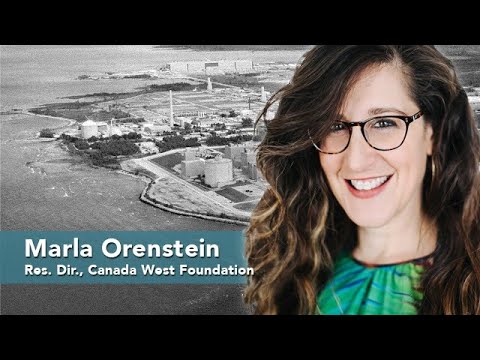
Rating: Advanced high school and post-secondary
Summary: An August, 2020 report from the Canada West Foundation provides a list of all climate policies of Canadian provinces and the Canadian government. With the increasing focus across all sectors of society on reducing GHG emissions, governments across the country have enacted legislation and regulations intended to further this goal. The approaches taken have varied widely, employing a variety of policy tools applied across an array of sectors and contexts.
Related links:
-
A Compendium of GHG Reduction Legislation and Regulations Across Canada
-
The serious $70 BILLION climate plan you’ve heard nothing about
-
Trudeau climate plan sets course for net-zero greenhouse gas emissions by 2050
-
Are Canadians ready for the Green Party, NDP climate battle plans? Maybe not
This interview transcript has been lightly edited.
Markham Hislop: Environmental policy is on everyone’s mind these days because the federal government’s going to be introducing the COVID-19 recovery act on the 23rd, and coincidentally, the Canada West Foundation has just published a compendium of environmental regulations across Canada, including the federal government. So we’re going to talk to Marla Orenstein, who is the research director at CWF. Welcome to the interview Marla.
Marla Orenstein: Thanks so much Markham.
Markham Hislop: Why don’t you just give us an overview of what you’ve published?
Marla Orenstein: It is a compendium, so it’s a giant list. It’s perfect for putting you to sleep if you’re having difficulty sleeping these days, but it lists all the regulations and legislation at a federal or provincial or territorial level that in some way regulates greenhouse gas emissions.
Markham Hislop: Well, that’s very interesting because I don’t think that we have a good handle on that. You’re based in Calgary in Alberta and we don’t have a good handle on that and I’m guessing from other provinces, in BC where I’m located. So is that what prompted you to put together this list?
Marla Orenstein: That’s exactly it. We were trying to do our own research. And in particular, we were looking at the Clean Fuel Standard and trying to identify to what extent was it likely to be successful or not, effective or not? And we realized we couldn’t actually answer that question because we didn’t have that full understanding of the landscape of what existed already. The Clean Fuel Standard wasn’t going to be coming into a blank slate. It was going to be coming into an already fairly crowded space, but there wasn’t anything that we could turn to see exactly what existed across the country. And so that need for ourselves led us to putting this thing together.
Markham Hislop: Are there links to the legislation? Are there numbers attached to budget allocation, for instance, attached to some of the regulations?
Marla Orenstein: So we haven’t put any links to budget allocations? We did try to do a little bit of quantitative breakdown and that proved to be really quite interesting, a little bit futile at the same time, simply because every province structures things so differently. So in some provinces you have a single piece of legislation with a single regulation that’s attached to that, and there might be six or eight of these different ones, each of which comprises a different line on the list. In other cases, some provinces have decided that it’s better to shoehorn a lot of different regulations under one umbrella act, or to take a single regulation and apply it to a lot of different situations. So, although we’ve done some counting to try to give an idea of the complexity or the scale of the problem, we can’t directly compare because the different approaches confound it.


Be the first to comment